The nomadic communities of the Sangsari people, due to their proximity to the capital and their increasing presence in major cities, are gradually losing their traditional way of life and culture. From Ahmad Nadalian’s perspective, in today’s crisis-stricken world, being nomadic is not a sign of backwardness; rather, it can serve as a model for contemporary humanity and as a path toward safeguarding the future. He believes that today’s society must learn how to adapt to nature and coexist with it. In his view, the lifestyle of the Sangsari nomads creates a renewed connection between art, culture, and the environment. Based on this belief, the Sangsari nomads find meaning within Nadalian’s cultural and social activities. His goal in organizing the festivals was to identify, document, and introduce the culture and art of the Sangsari tribe to those interested in sustainable ecology.
In Sangsar and within the territories where the Sangsari nomads migrate—particularly their summer pastures around the villages of Polur and Sangsar—Ahmad Nadalian has organized numerous festivals, workshops, and events that combine art, local culture, and environmental concerns. These activities can be interpreted within the frameworks of Eco-Art and Community-Based Art. His purpose was to revive the fading nomadic lifestyle and to promote cultural and ecological sustainability within Sangsari nomadic communities.
His work in this area can be described through several key points:
How Nadalian Was Able to Engage the Sangsari Nomads in Cultural and Artistic Festivals in Gol-e Zard, Gateh-Chal, and Sangsar
Engaging the Sangsari nomads (the summer-dwelling pastoralists of the Mehdishahr region and its surroundings) in a cultural-artistic project is not a simple task. It requires a deep understanding of local culture, long-term trust-building, and continuous presence. Nadalian achieved this precisely by following this path and succeeded in gaining their trust and participation in the Gol-e Zard, Gateh-Chal, and Sangsar art and cultural festivals.
Instead of imposing a top-down project, he adopted a participatory and dialogical approach. This approach is what led to the enthusiastic involvement of the community in these festivals.
Environmental Projects Aligned with Nomadic Concerns
Nadalian created numerous artworks to protect nature and the environment. These concerns are meaningful and valuable to nomadic pastoralists whose entire livelihood depends on the natural environment.
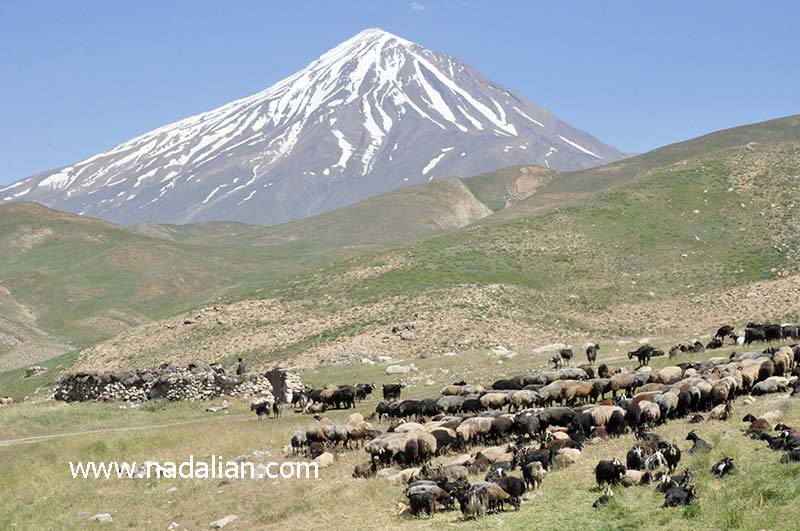
The Sangsari livestock and Mount Damavand – the summer pastures of Gateh-Chal
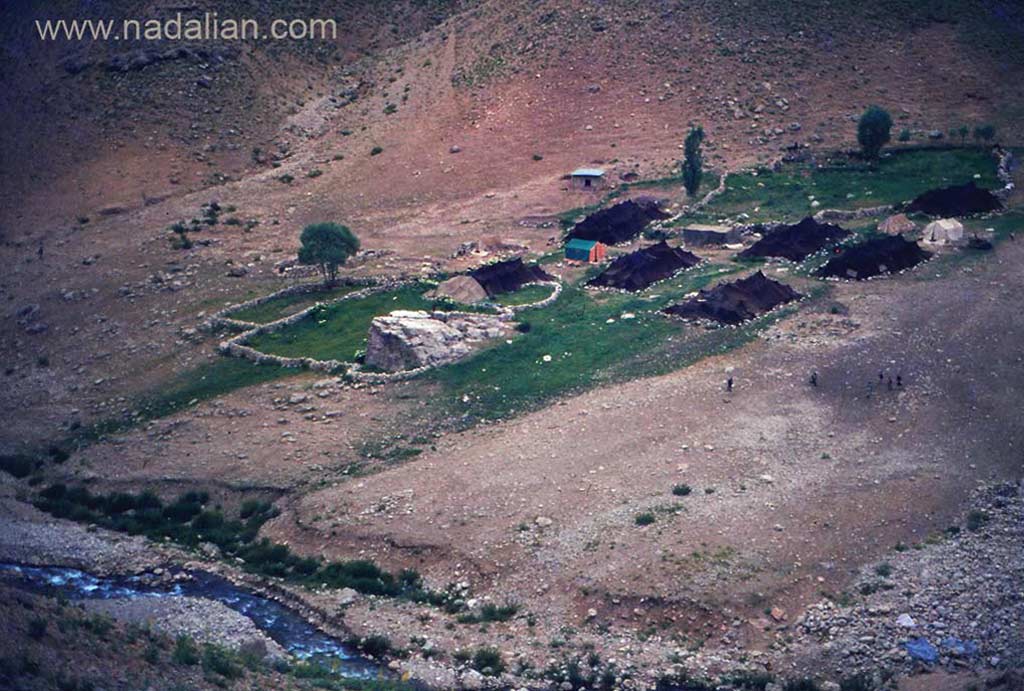
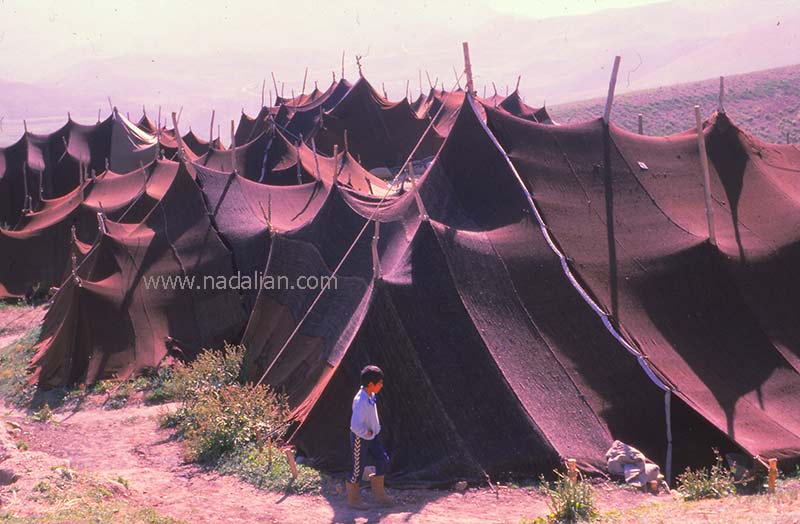
Consistency and Long-Term Presence
Trust in traditional communities is not earned quickly. Nadalian lived for years in the Polur region, established an art center and gallery there, and consistently visited the nomads in their summer pastures. This continuity led the nomads to accept him not as a guest or outsider but as a member of their extended family.
د.
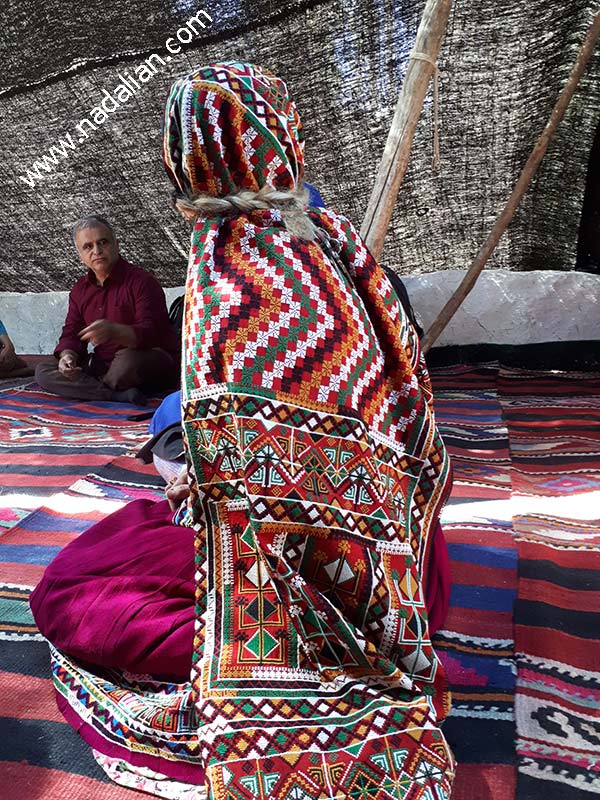
Reviving an Eco-Adaptive Cultural Identity Through Cultural Symbolism
Due to the hardships of nomadic life, many summer tasks are now performed by migrant laborers from Afghanistan. The gut (or siāh-chādor, the black tent) is no longer set up, and shepherds often rely on canned food and flatbread. In reality, a whole culture is fading.
From Nadalian’s view, presenting the nomadic lifestyle as a culturally attractive experience for visitors and eco-tourists could help preserve their way of life and traditions. The disappearance of ceremonies and neglect of nature is eroding parts of Sangsari culture. Organizing festivals in the heart of the summer pastures with the participation of artists, researchers, and local people helped revive and reinforce the cultural identity of the nomads. Through documentation, photography, and film, Nadalian also preserved and disseminated this cultural heritage.
Coinciding the Sangsari Cultural Festivals with Environmental Art Festivals
From July 9 to 12, 2010 (Tir 18–21, 1389), the summer pasture of Gol-e Zard in Polur hosted artists and visitors taking part in the Sangsari Cultural and Artistic Festival. Environmental artists were also present, and the 29th Environmental Art Festival was held simultaneously. The festival showcased ancient Sangsari artistic traditions alongside contemporary art.
The new generation of Sangsari artists is active in painting, music, sculpture, environmental art, photography, and film. Artists such as Habib Derakhshani (painter and researcher) and Majid Derakhshani (a renowned musician) participated. In addition to the Sangsari participants, many artists from various disciplines attended, and the 29th Environmental Art Festival took place alongside the Sangsari festival. In a gathering held inside one of the black tents, the relationship between environmental art and the nomadic lifestyle of the Sangsari people was discussed. During the festival, landscape architecture students highlighted that Nadalian’s art owes much to the nomadic roots of his ancestors.
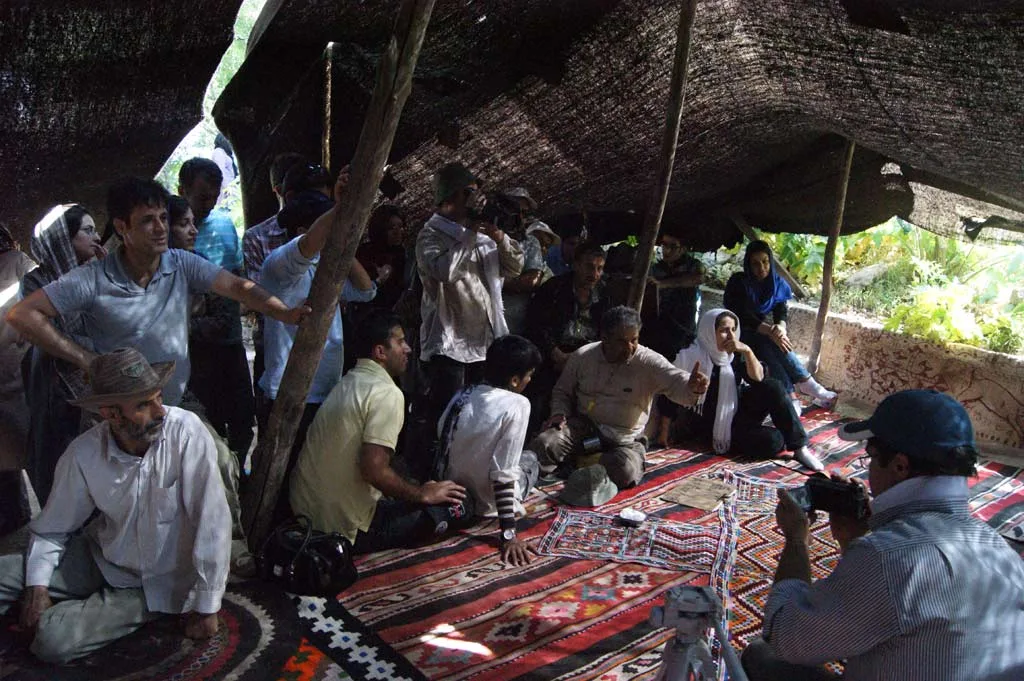
The Sangsari black tent, known as the “gut”, is unique; compared to the tents of other Iranian nomads, it is larger and more aesthetically refined, and its interior divisions resemble traditional Iranian architectural layout.
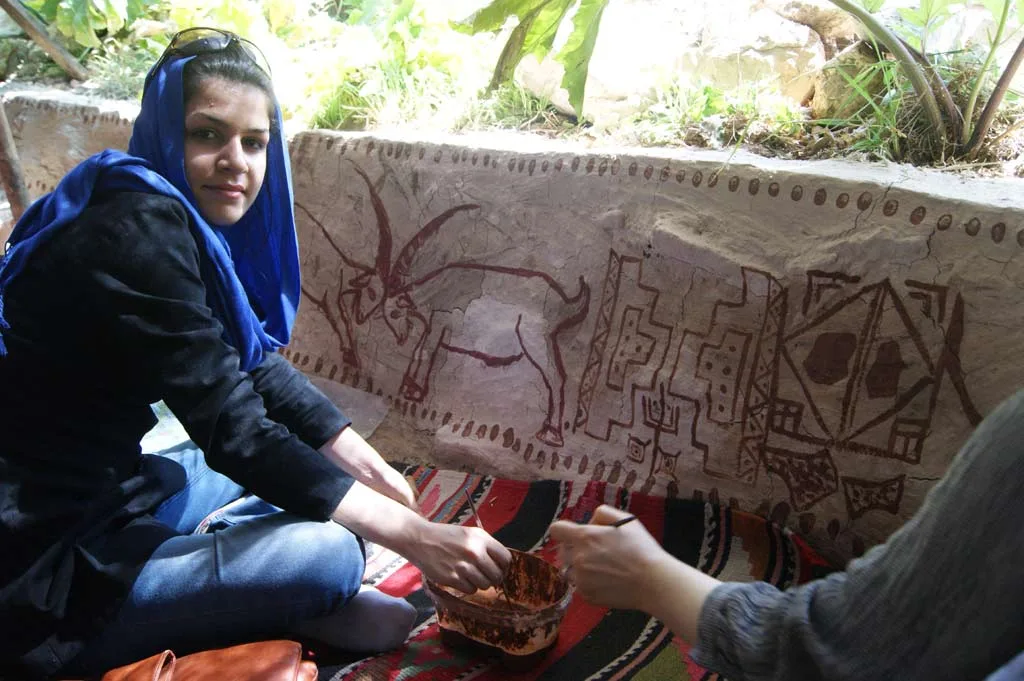
Artists created artworks using the red soils of the region.
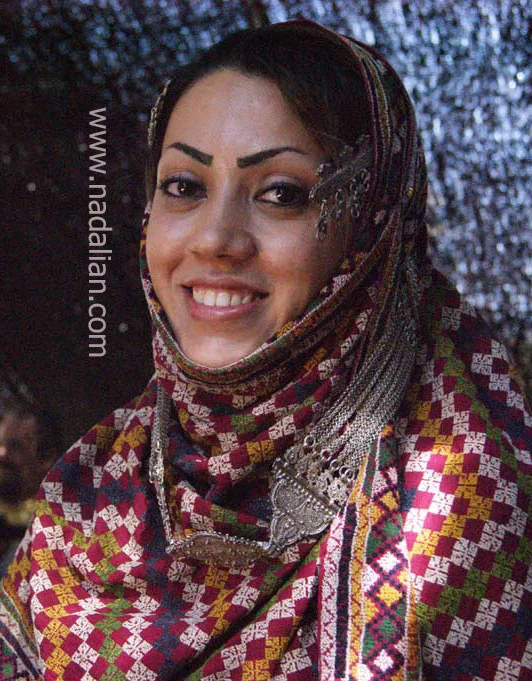
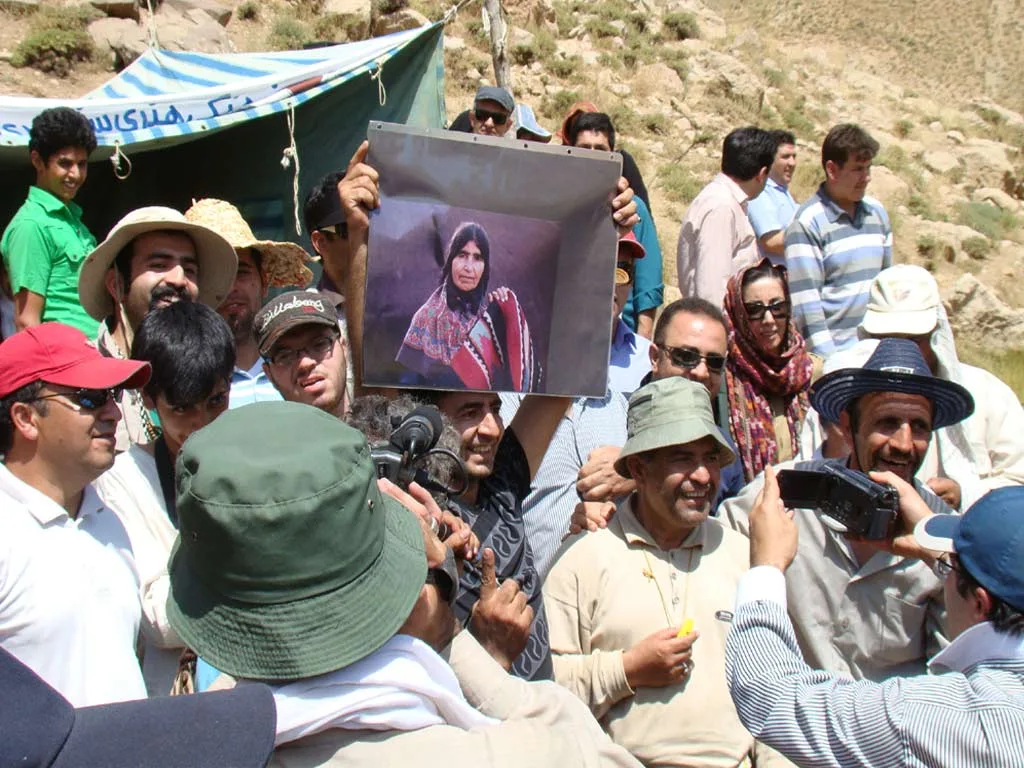
The 32nd Environmental Art Festival and the Second Sangsari Cultural and Artistic Festival
The 32nd Environmental Art Festival, held alongside the Second Sangsari Cultural and Artistic Festival, took place on June 29–30, 2011 (Tir 8–9, 1390) in the Gol-e Zard summer pasture. Artists created their works through environmental installations and clay sculptures. For the festival, the Sangsari nomads’ black tents (gut) were set up, and participating artists exhibited their works inside and around the tents, integrated with the surrounding landscape.
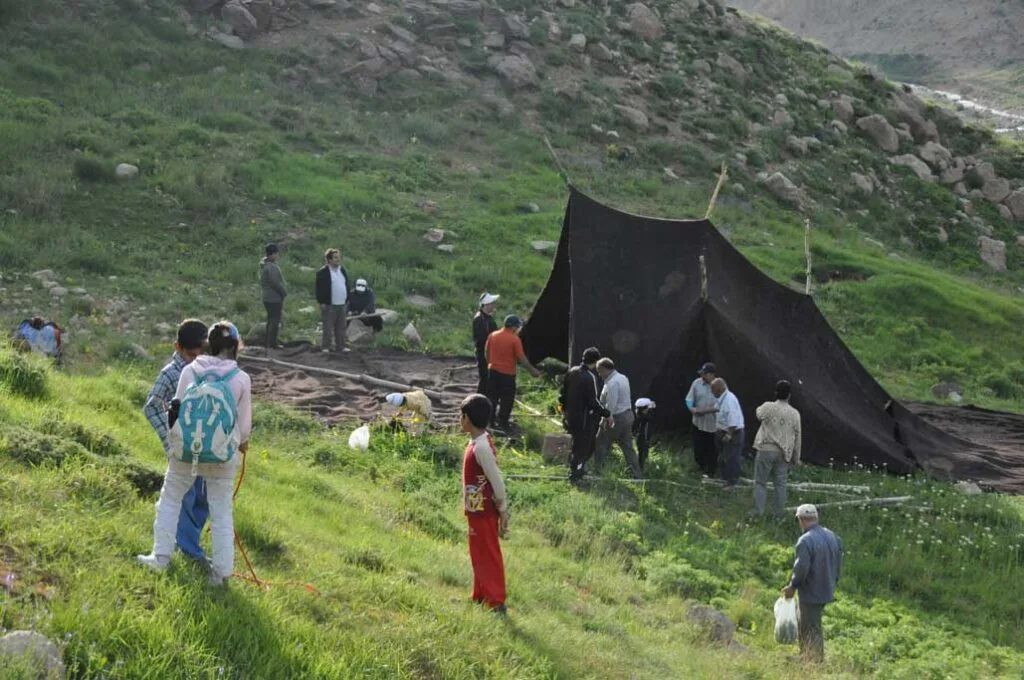


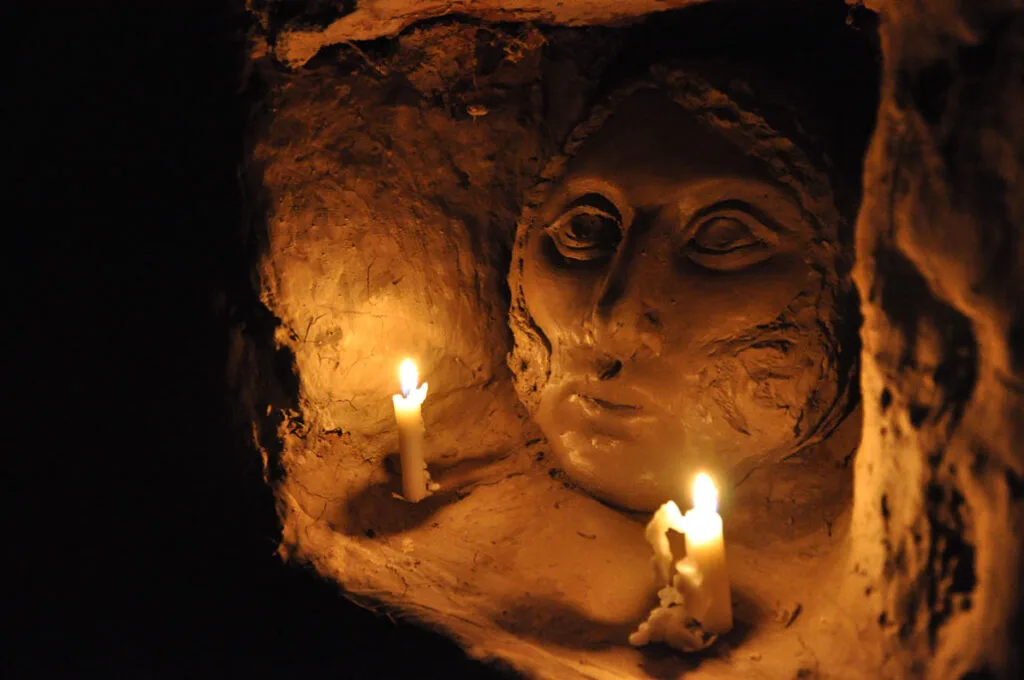

Participatory, Not Spectatorial Festivals
In the Gol-e Zard and Gateh-Chal festivals, Nadalian ensured that local people were not merely spectators but active creators. Children, women, shepherds, and elders of the Sangsari nomads participated in performances, traditional cooking competitions, and the display of local products and crafts. This shared experience created a strong sense of cultural ownership among the Sangsari community.


The Interconnection of Art, Nature, and Nomadism
With deep knowledge of Sangsari nomadic culture, Nadalian designed festivals where rituals, dances, music, handicrafts of both men and women, traditional food culture, and the products of nomadic life were exhibited for the younger generation and guests. These events were held amidst natural landscapes, along migration pathways or within the summer pastures themselves, to reinforce and preserve the ecological and cultural values of nomadic life.
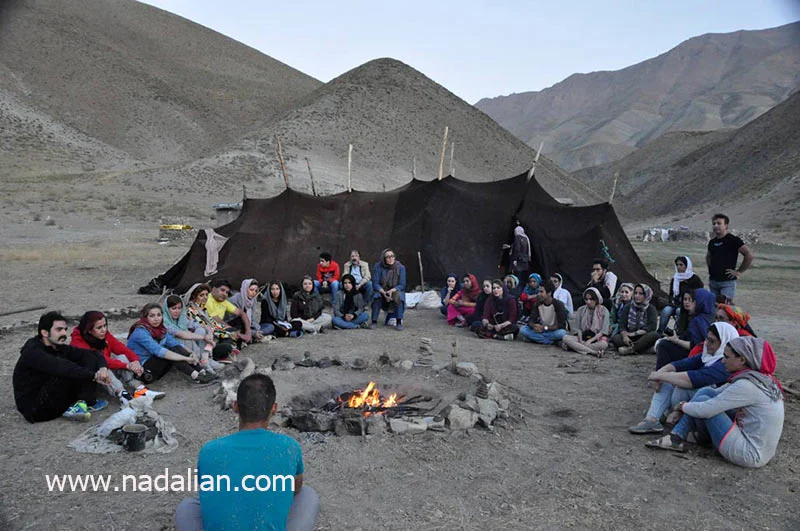
Environmental Education and Awareness
Throughout the festivals, Nadalian organized workshops addressing topics such as water conservation, preventing pasture pollution, and restoring ecological balance in summer pastures. By introducing the lifestyle of the Sangsari nomads and highlighting women’s artistry and traditional rituals, he used education creatively—embedding environmental messages within a culturally meaningful and aesthetic experience for both the Sangsari community and visiting artists.
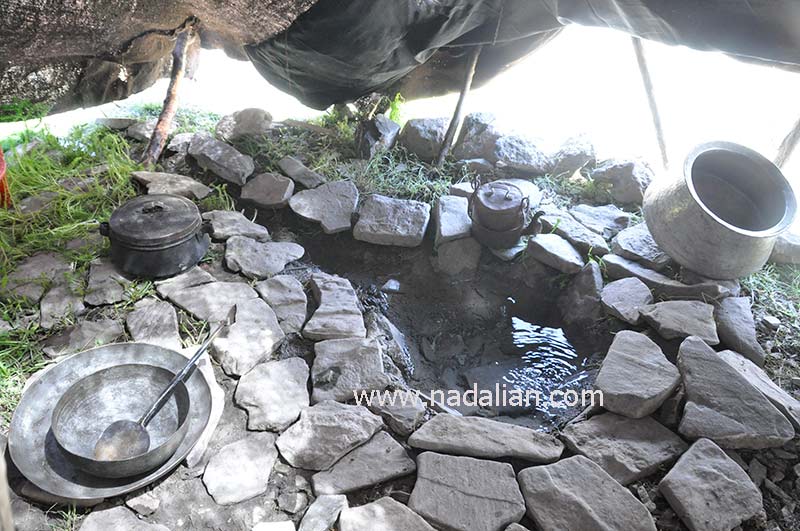
Living Among the People and Understanding Local Culture
Unlike many urban artists who enter a region only to execute a project, Nadalian lives in an area close to the summer pastures, regularly visits families who still lead nomadic lives, and participates in their rituals and ceremonies. He researches their language, beliefs, proverbs, music, and traditions and documents them.
This cultural understanding enabled the nomads to feel that he had not come “from outside” to judge them but to bring their voice to the world.

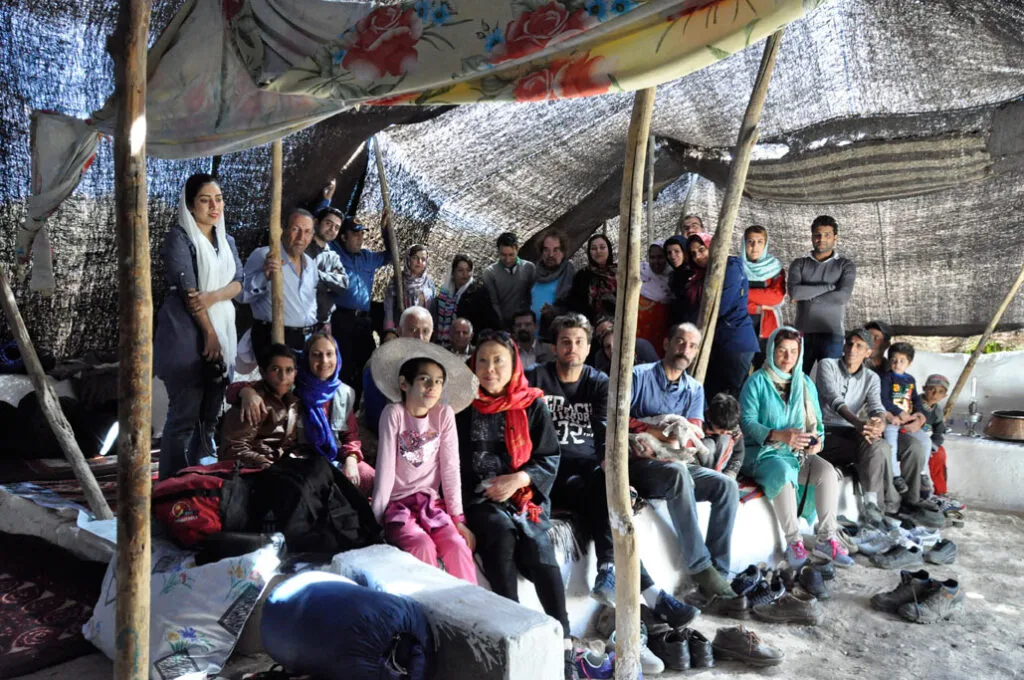
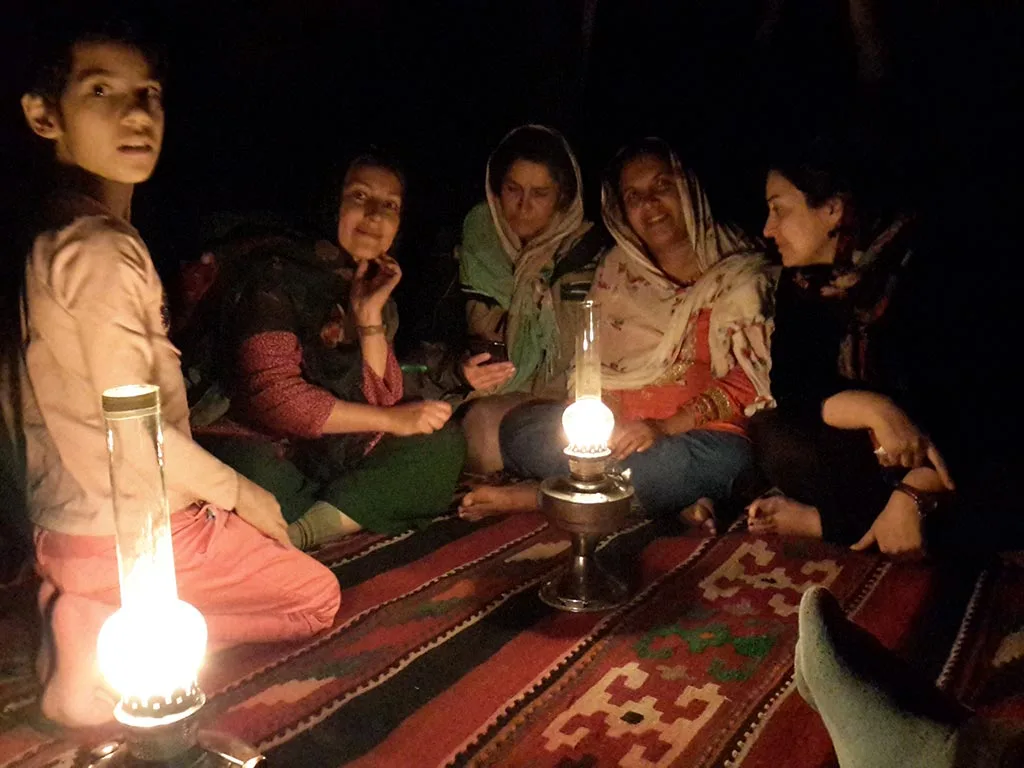
Promoting Experiential, Cultural, and Responsible Tourism in the Sangsari Nomads’ Black Tents (Gūt)
Through organizing these festivals, Nadalian ultimately succeeded in drawing the attention of cultural and artistic tourists to the Sangsar region and its surrounding summer pastures. His goal, however, was not merely to attract tourists; he emphasized that tourism must be sustainable and responsible—that is, conducted with respect for nature, local culture, and the regional economy. By involving nomadic women, he introduced their products to visitors and helped develop new forms of handicrafts that were then presented for sale.
Tour guides now try to bring visitors to the summer pastures, arrange gatherings with the Sangsari nomads, and even encourage them to stay overnight. Through this approach, Nadalian reminds both the nomads and the tourists that nomadic life represents a model of environmental sustainability—a way of living based on respect for natural cycles, seasonal migration, and avoiding the overexploitation of land.
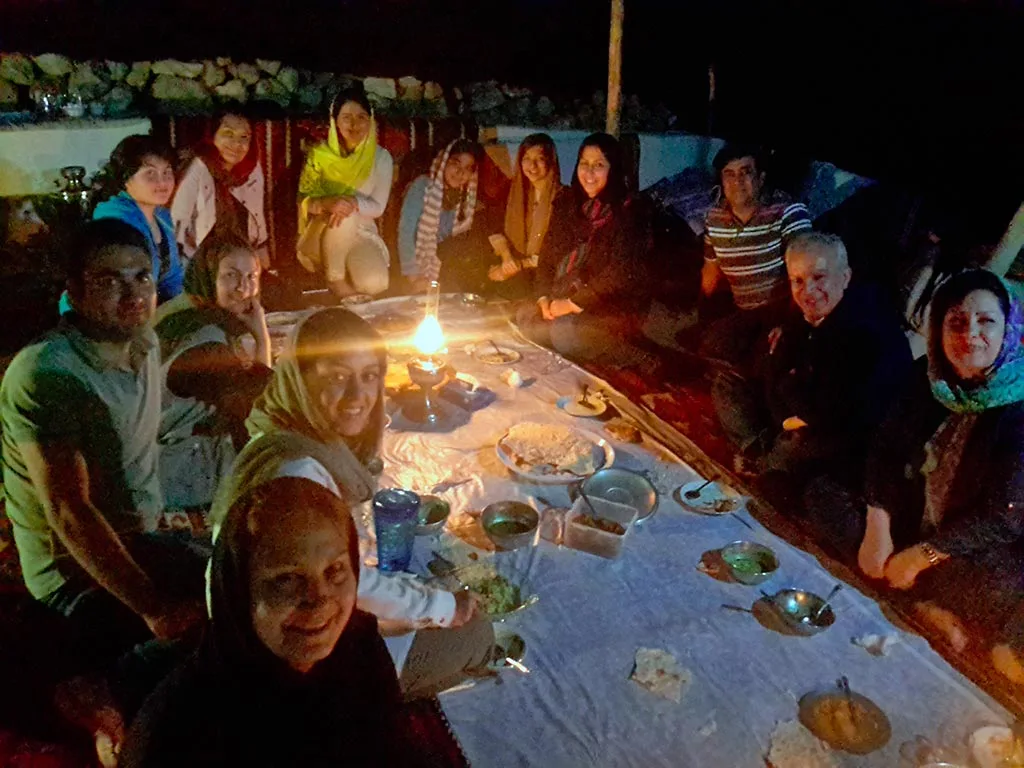
Active Participation of Women
In many nomadic communities, women play a crucial role in transmitting culture. After extensive research on traditional women’s dance—especially the iconic ṭarah-afshānī—and by organizing artistic events and workshops, Nadalian created conditions for women to perform their dances publicly. Providing opportunities for young girls to participate allowed their creativity to be recognized, which in turn increased trust among families and community elders.

Women’s Dance as an Agentive Art and a Platform Against Inequality
The Sangsari women’s “ṭarah-afshānī” dance is one of the most unique dances in the world.
It incorporates the concept of “ballet” in a local form, and while it is a duet, it is fundamentally different from tango in its cultural meaning and structure.
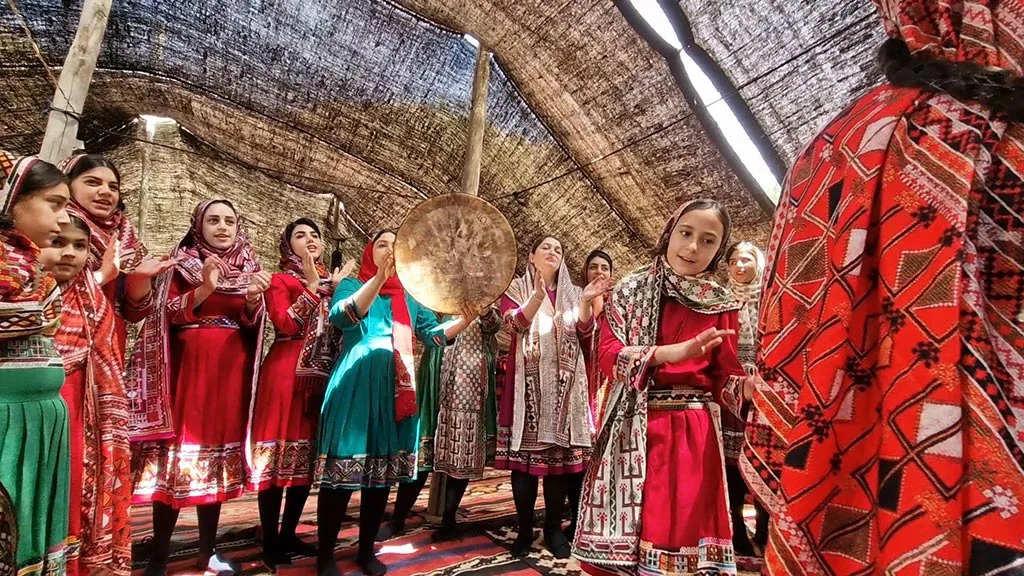

Narration and Documentation
Nadalian documented the works, stories, and traditions of the people through film, photography, and writing. When the nomads saw their names and culture appear in media and exhibitions, it deepened their sense of pride and belonging. Overall, through combining art, ethnography, social participation, and eco-art, Nadalian succeeded in creating a connection between contemporary art and the lived experience of the Sangsari nomads.
Nomadism as a Pathway to the Future, Not a Symbol of Backwardness
Nadalian believes that in today’s crisis-stricken world, nomadism should not be seen as a sign of backwardness; rather, it may offer a way to save the future. His reverse migration from England back to Iran, his life in nature, and his seasonal movements to the islands symbolize this belief. If this philosophy becomes more widespread, nomadic life could become an aspirational lifestyle, embraced especially by educated people who take pride in it.
In a world threatened by environmental destruction, consumerism, and disregard for natural cycles, adopting aspects of nomadic life is not a return to the past but a new way of rethinking humanity’s sustainable future. Although not everyone can live as nomads, the number of educated people choosing reverse migration and seeking a life closer to nature is increasing. Many of them adopt a form of digital nomadism, working remotely while continuously traveling or relocating.
Emergence of Cultural Symbols and Ambassadors among the Sangsari Nomads
Although experiential tourism in the gūt tents remains relatively small, one of the most courageous Sangsari women who deserves to be seen as a role model and cultural ambassador is Dr. Soheila Ghanian. Despite holding a doctoral degree, she still practices the nomadic lifestyle of her ancestors, produces traditional goods, documents them, and proudly shares them on social media. She has the potential to transmit this tangible and intangible heritage to future generations and to serve as an inspiring example for others.
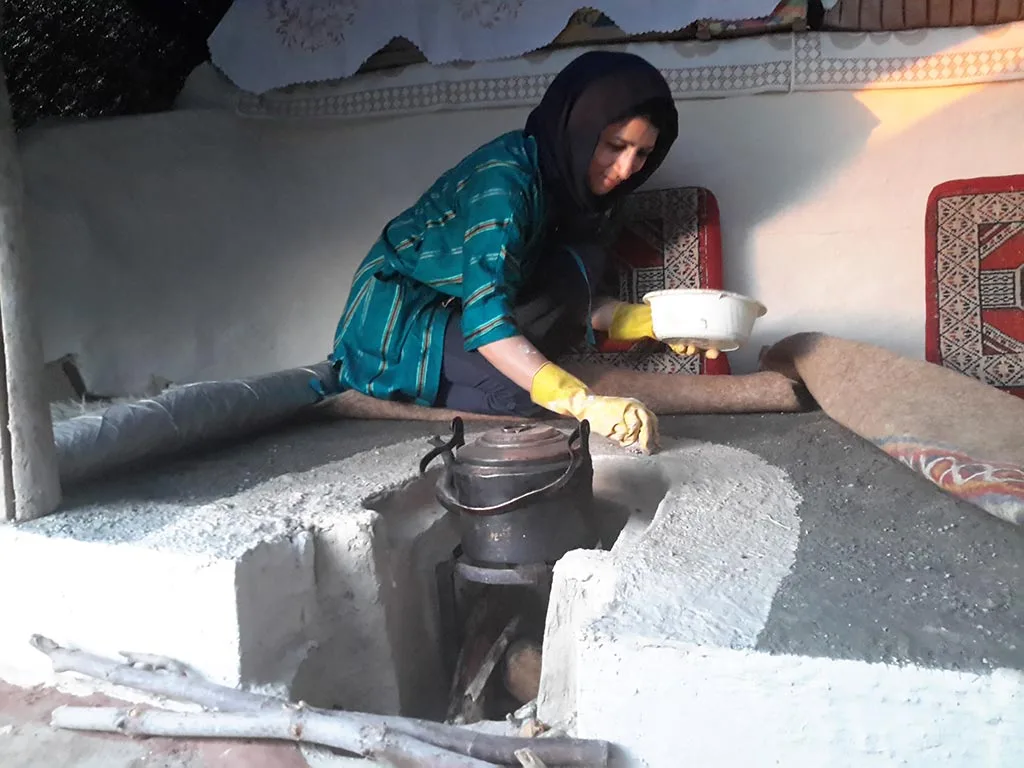
Similarities and Differences between Nadalian and Digital Nomads
For many years, Nadalian lived and worked in various countries, constantly moving—from Italy and Greece to Tunisia, Morocco, Switzerland, and Hormuz Island. His travels were not for leisure but for creating artworks and carrying out environmental and social projects. In this sense, he functions as a global nomad of art.
He uses digital technologies extensively for communication and education—presenting his projects, connecting with audiences, conducting online workshops, and documenting his works. In this way, he resembles digital nomads who rely on technology to continue their work remotely.
However, his lifestyle differs significantly from typical digital nomads:
Digital nomads travel for personal income and spatial freedom; Nadalian travels with cultural, social, and environmental missions.
Digital nomad work is mostly virtual (writing, design, programming, consulting), while Nadalian’s work is physical and community-based—stone carving, land art, ritual performances, and direct engagement with local people.
While he travels constantly, he maintains cultural bases—such as Hormuz Island, Laft, and Polour—which provide identity and continuity, whereas digital nomads often intentionally live without fixed roots.
Thus, Nadalian can be described as a form of cultural and artistic nomad, one who uses digital tools not for lifestyle freedom but to expand the reach of his message.
Turning Ritual into Art
Rather than presenting local rituals merely as traditional performances, Nadalian reinterpreted them within contemporary art. He incorporated dances, music, costumes, and local symbols into artistic events in a way that preserved cultural integrity. Many Sangsari nomads feel that the events he organized and his artistic works reflect their own culture and life.


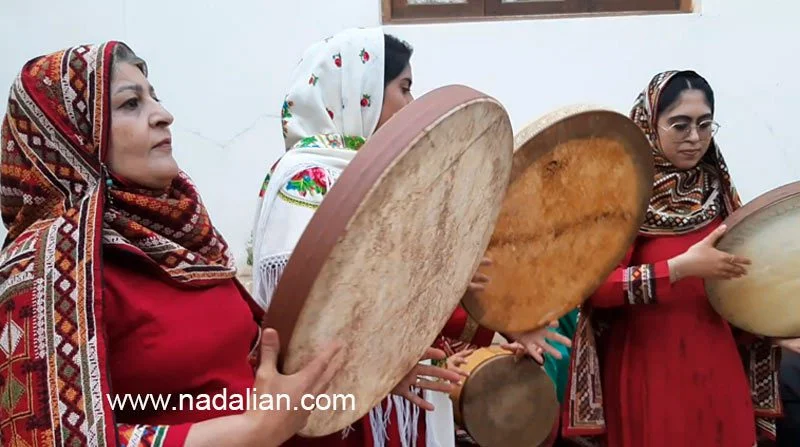
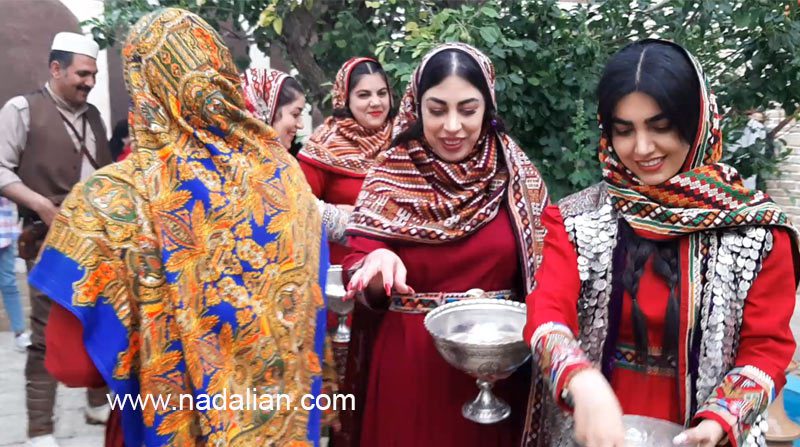
Performances of this sacred ritual—celebrating the purity of water and the divine maiden—were revived and presented in the Kajin eco-lodge in Sangsar through Nadalian’s initiatives.
Art as a Mediator of Sustainability
Ultimately, Nadalian’s approach can be regarded as an example of art for sustainable development. He acted not only as an artist but also as a social and cultural facilitator who built bridges between the Sangsari nomads, cultural institutions, and tourists. As a result, his festivals and projects in Sangsar became models for environmental, cultural, and economic sustainability.
Views: 2

 فارسی
فارسی

